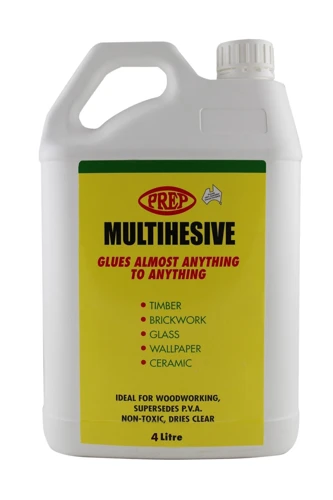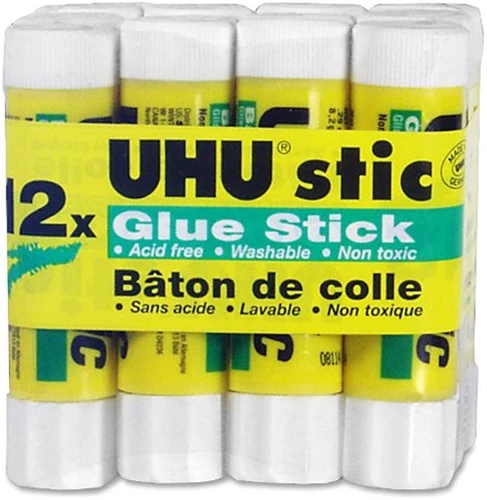When it comes to DIY projects or repairs, understanding the nuances of a plastic adhesive guide is crucial for achieving a durable fix. The world of adhesives is vast, but with the right knowledge, you can navigate it like a pro.
What Is Plastic Glue?
Essentially, plastic glue is a type of adhesive specially formulated to bond plastic materials. Its unique composition caters to the non-porous surfaces of plastic, creating a strong bond that other adhesives cannot match.
Types of Plastic Adhesives
- Cyanoacrylate (Super Glue)
- Epoxy Resins
- Polyurethane Adhesives
- Silicone-Based Adhesives
Choosing the Best Glue for Plastic
Selecting the best glue for plastic is not just about strength; it’s about compatibility. Not all plastics are the same, and using the incorrect adhesive can result in a weak bond or damage to the material.
Identifying Your Plastic Type
Before you choose an adhesive, you need to identify the type of plastic you’re working with. Look for a recycling symbol with a number; this will usually tell you the resin type and help guide your choice.
Best Options for Strong Plastic Glue
To ensure a lasting bond, opt for a strong plastic glue such as epoxy or specialized plastics adhesives that cater to the specific type of plastic you’re dealing with.
Best Waterproof Plastic Glue for Outdoors
For outdoor applications, waterproof plastic glue is a must. Marine-grade epoxies or outdoor-rated polyurethane adhesives offer the resilience needed against moisture and weather.
Bonding Plastic Parts: A DIY Guide
DIY plastic gluing is a valuable skill, allowing you to tackle plastic repair projects with confidence. Let’s delve into the process for successful results.
Preparation for Plastic Repair
Cleanliness and proper surface preparation are vital. Ensure that both surfaces are clean, dry, and free of any oils or dust.
Step-by-Step Instructions for Gluing Plastic
- Identify the plastic type.
- Select the appropriate adhesive.
- Prepare the surface for adhesion.
- Apply the adhesive as directed.
- Press and hold the parts together.
Specialized Plastic Glue Recommendations
Certain applications require specialized adhesives. Knowing which product to use can make all the difference in your project’s success.
Glue for Plastic Toys: Child-Safe Options
Child-safe options for glue for plastic toys are available, offering strong bonds without harmful chemicals. Look for non-toxic labels and certifications.
DIY Plastic Gluing: Tips and Tricks
For successful DIY plastic gluing, always follow the manufacturer’s instructions, work in a well-ventilated area, and allow ample curing time.
Glue Plastic to Metal: Ensuring a Strong Bond
To glue plastic to metal, it’s crucial to use an adhesive that can handle different expansion rates and materials, such as epoxy or specialized hybrid adhesives.
Troubleshooting Common Issues in Plastic Bonding
Even with careful preparation, issues can arise. Let’s explore solutions to some common bonding plastic parts challenges.
How to Bond Plastic Surfaces Without Clamping
If clamping isn’t an option, consider using double-sided tape or temporary supports until the adhesive sets to ensure the bond remains secure.
Dealing with Excess Glue and Spills
In case of spills, act quickly. Use a damp cloth for water-based adhesives or a solvent recommended by the manufacturer for others. Always wear protective gloves.
Maintaining and Storing Your Plastic Adhesives
To extend the shelf life of your adhesives, store them in a cool, dry place away from direct sunlight. Ensure caps and lids are sealed tightly to prevent drying out.
Shelf Life and Optimal Conditions
Most adhesives have a shelf life indicated on the packaging. Adhere to these guidelines and store under optimal conditions to maintain their efficacy.
Frequently Asked Questions About Plastic Glues
There are always questions when it comes to how to bond plastic. Let’s tackle some frequent queries.
How to Choose the Right Glue for Different Plastic Types?
Choosing the right adhesive starts with identifying your plastic type. Use the manufacturer’s recommendations and compatibility charts as a guide.
Can You Use Super Glue on All Plastics?
Super glue, or cyanoacrylate, is effective on many plastics but not all. It’s unsuitable for polyethylene or polypropylene without a primer.
Is There a Non-Toxic Glue for Plastic Toys?
Yes, there are non-toxic options explicitly designed for plastic toys. These adhesives are safe for use on children’s items and meet stringent safety standards.
If you’re embarking on a DIY project and need to work with different materials, you’ll find that not all adhesives are created equal. Whether you’re dealing with polypropylene, aluminum, or ABS plastic, understanding the right glue to use is crucial for the durability and success of your project. We’ve put together comprehensive guides to help you out. Check out our articles on how to glue PP plastic, which is notoriously tricky to bond, as well as our tips on how to glue aluminum for those metal projects. And if you’re working with ABS plastic, our guide on how to glue ABS plastic will ensure you get a strong, lasting bond.
Conclusion: The Path to a Perfect Plastic Bond
With the right preparation and knowledge, achieving a perfect plastic bond is within reach. Remember to choose the correct adhesive, prepare your surfaces, and allow adequate time for the bond to cure. Happy fixing!


